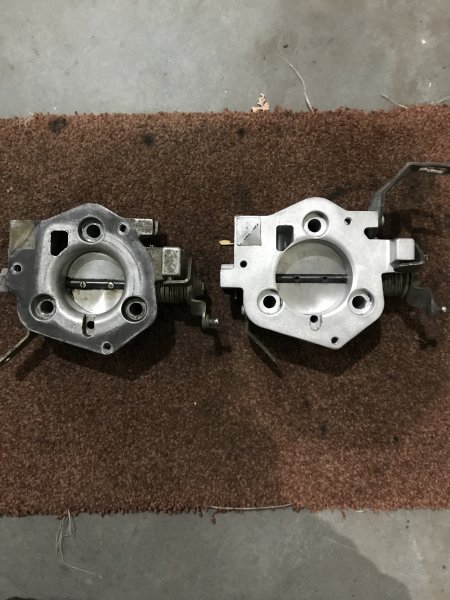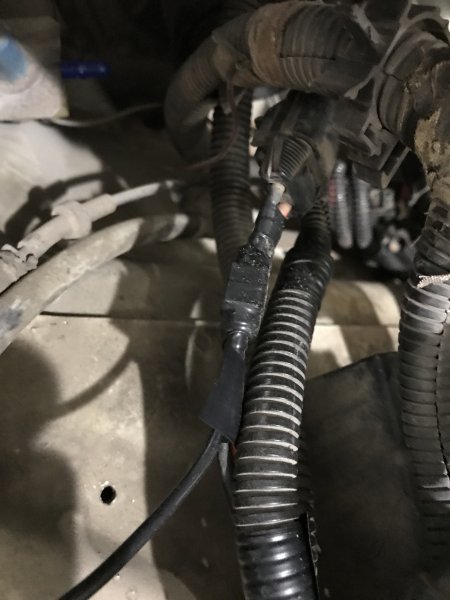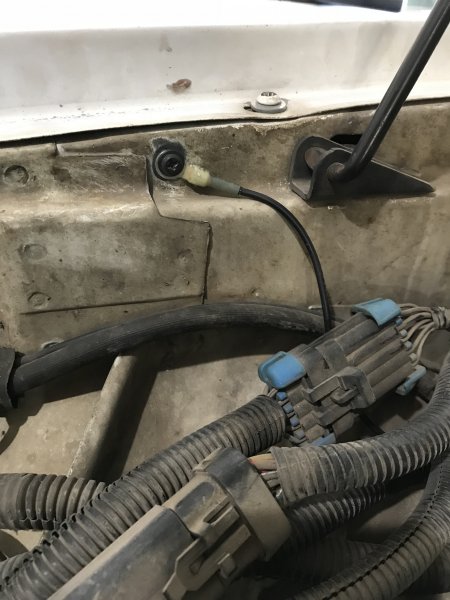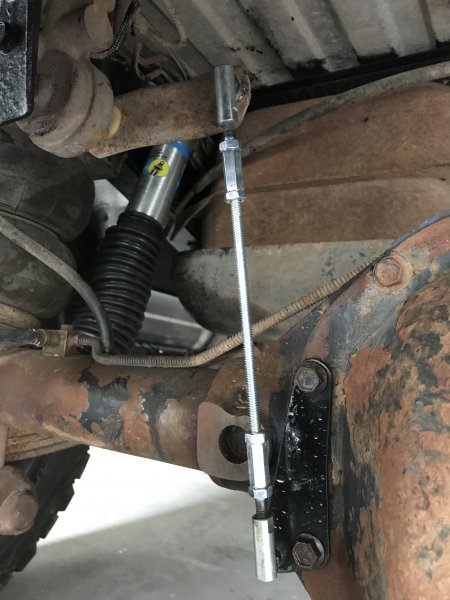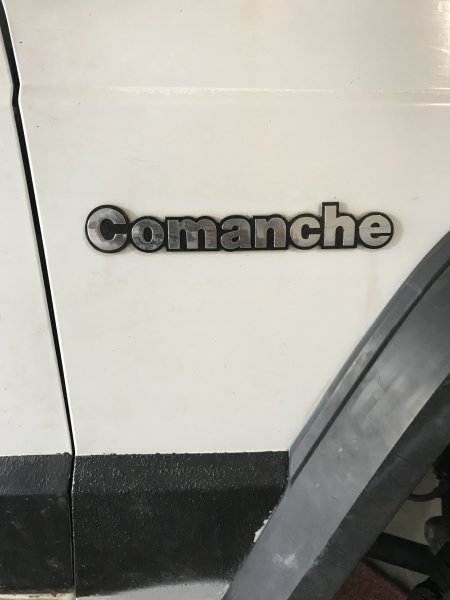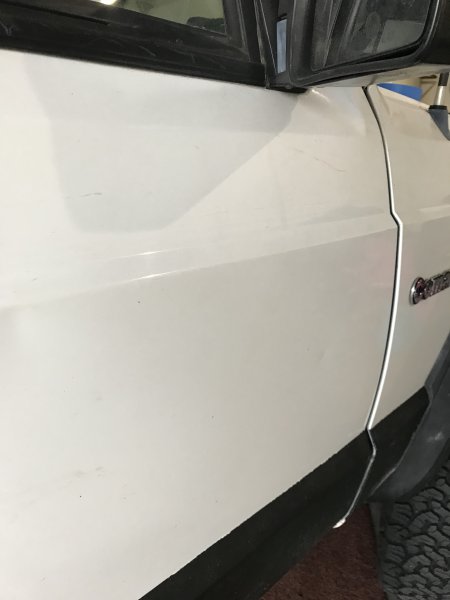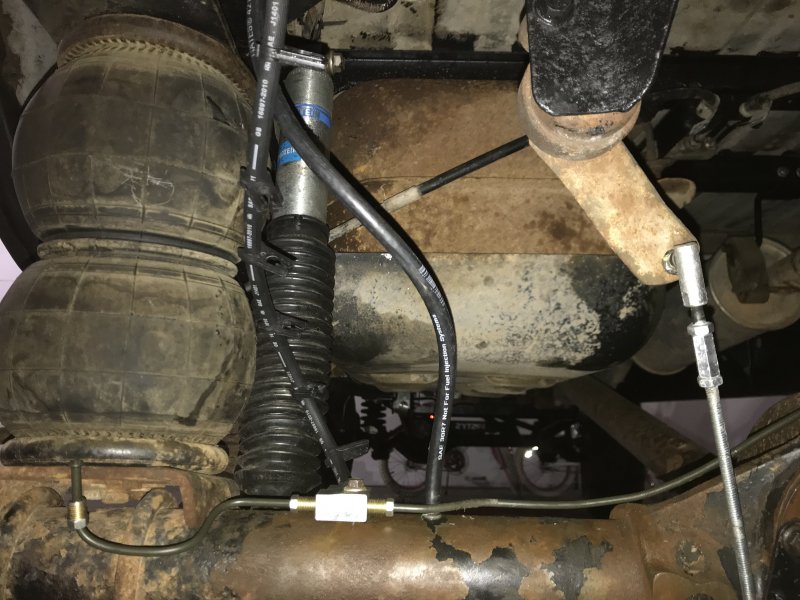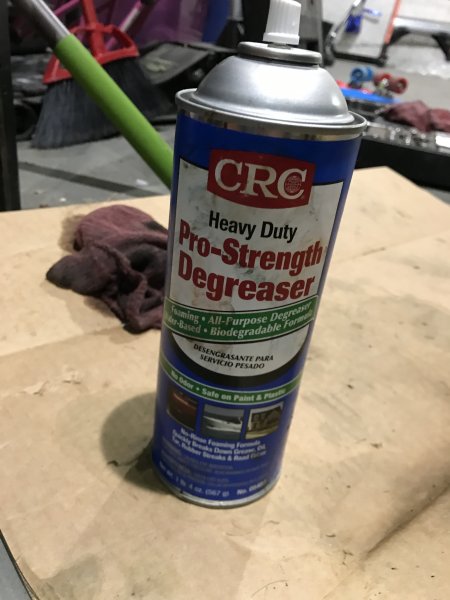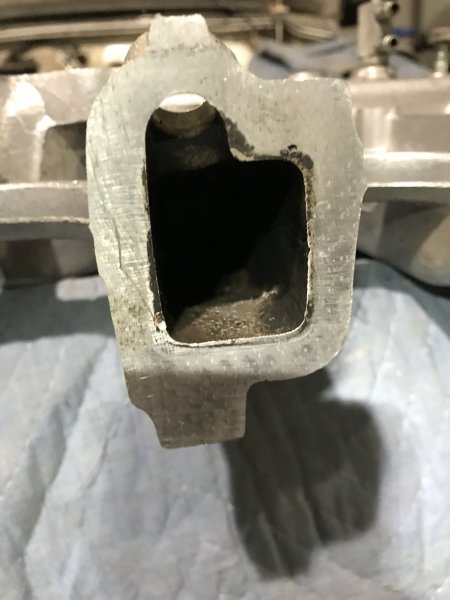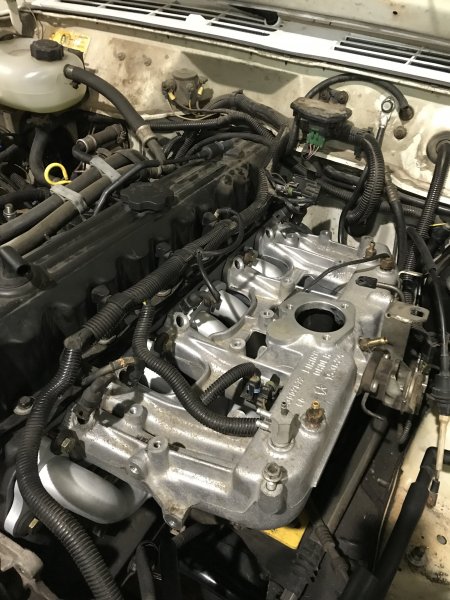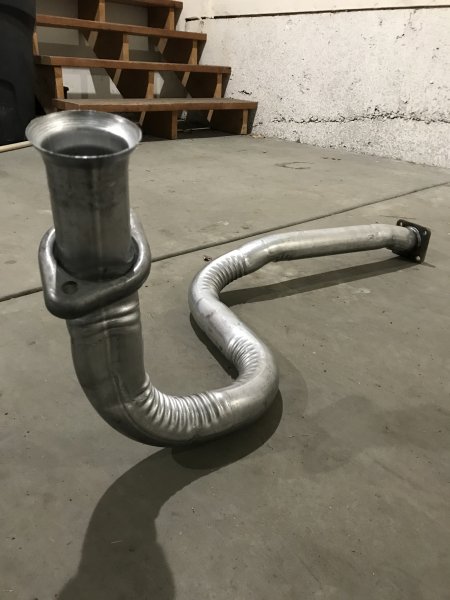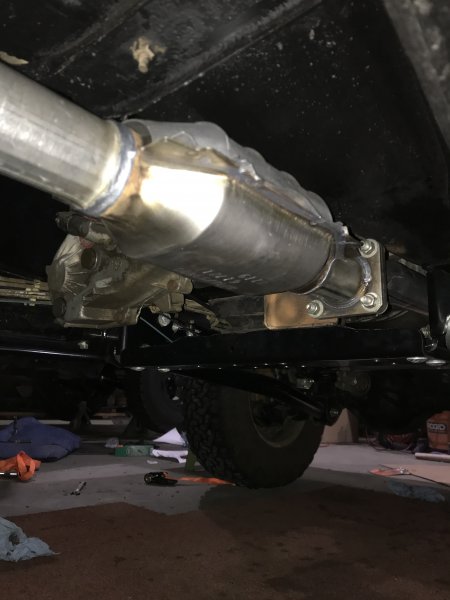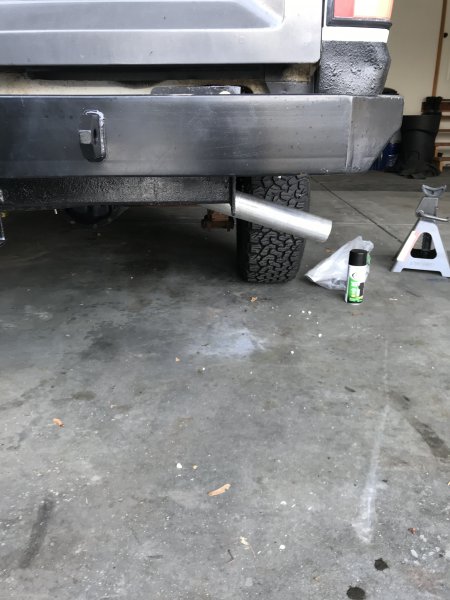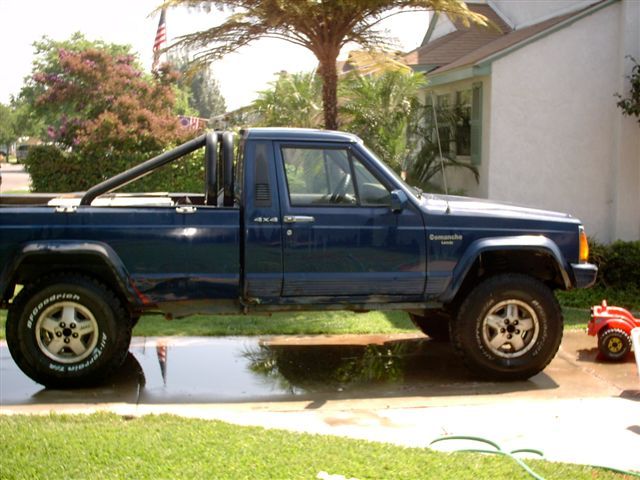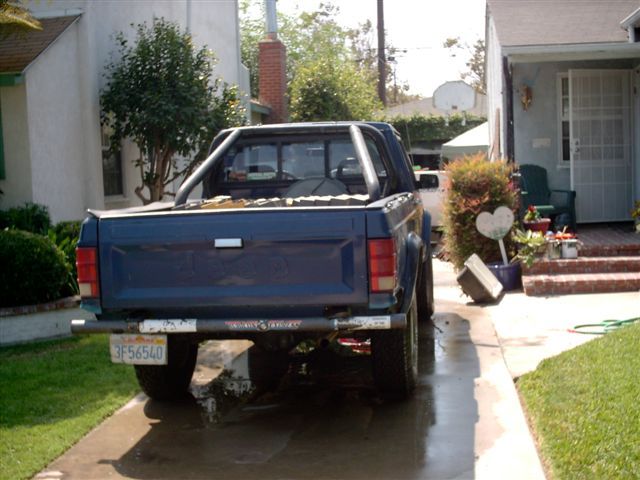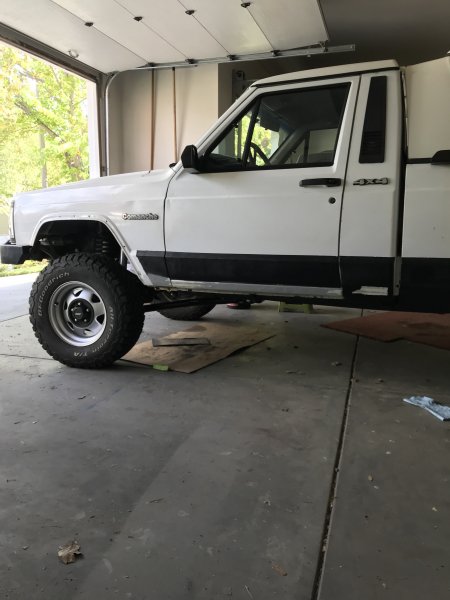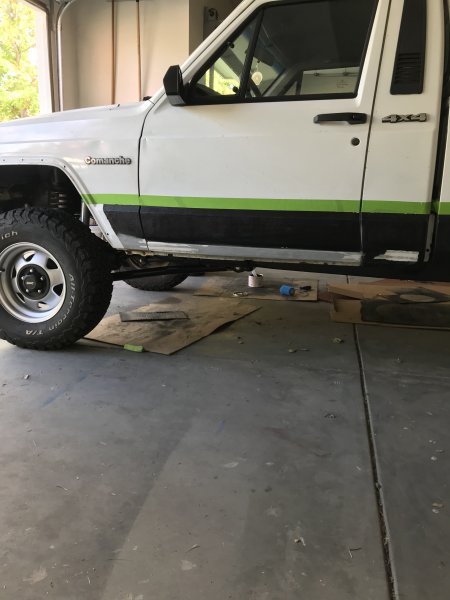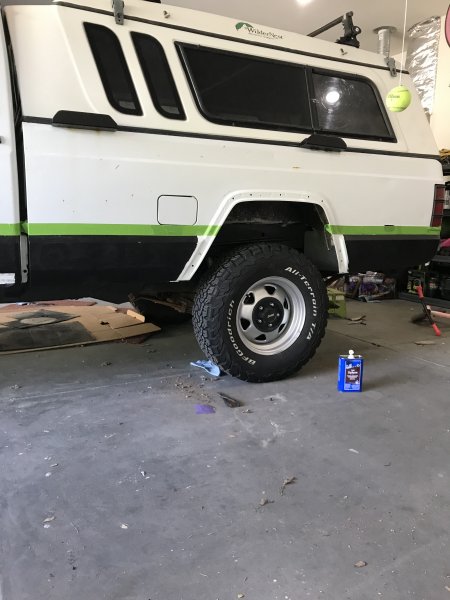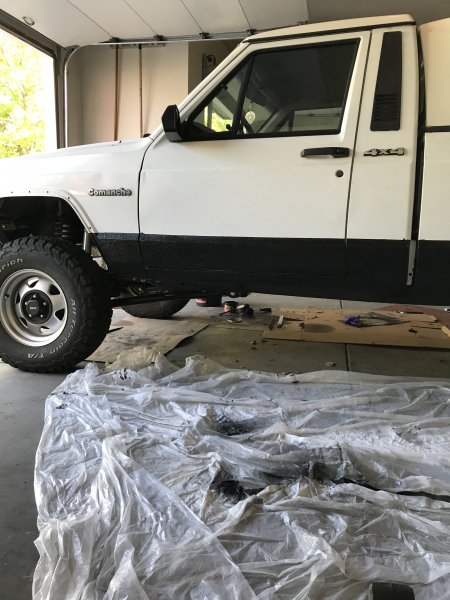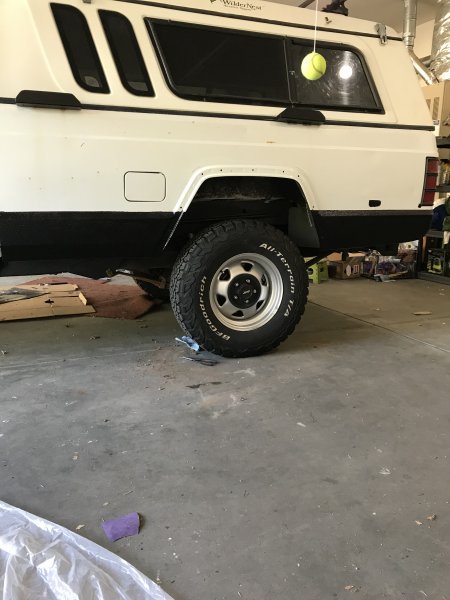Disc Swap Part I
I was tinkering around with the parking brake out in street in front of the house. After applying the brake the pedal released on its own, but the jeep didn't roll. Upon completing what I had been doing I went to pull forward only to find that the drivers side rear wheel did not want to spin. An initial attempt at a quick fix, putting the brake back on and releasing it again, did nothing to remedy the problem. So I now found myself in a conundrum. The tire would roll just fine in reverse, but would not move going forward. I could attempt reversing all the way around the block or try and drive into the garage. I went with trying to pull forward into the garage. 10 minutes later and severely burning brakes I was in the garage. After getting it into the garage I figured it was time to rebuild the brakes. I had been tossing around the idea of converting the D44 from drums to discs when the time came to redo the brakes. Research showed there were several ways to do it ranging from easier to more difficult. After doing the research I opted to use the Ford 8.8 for my disc conversion as its cheap...ish and pretty straight forward. I used this write-up as my source for information:
https://www.naxja.org/forum/showthread.php?t=967146. The write-up is filled with great information.
Ford explorer rear discs appear to be the best for this conversion as the bolt pattern of the backing plates is closest to the D44.
- 95' - 01' F8.8 rear discs backing plate has a 2" x 3 9/16" bolt pattern
- 86' - 90' MJ/XJ D44 backing plate has a 2" x 3 11/32" bolt pattern
This makes for a horizontal difference of 7/32" between the two backing plates. The explorer backing plate needs the bolt holes to be elongated to the inside 7/32" for them to bolt onto the D44 housing. A dremel with a carbide bit made quick work on elongating the backing plates from the F8.8. Make sure to remove about 1/8" inward side of each hole. I used the D44 retaining plate to measure when I had removed enough material. When removing the metal with the carbide bit wear gloves, the shaving that are created are super irritating if you get them on the skin, and hang around forever if you don't vacuum them up.
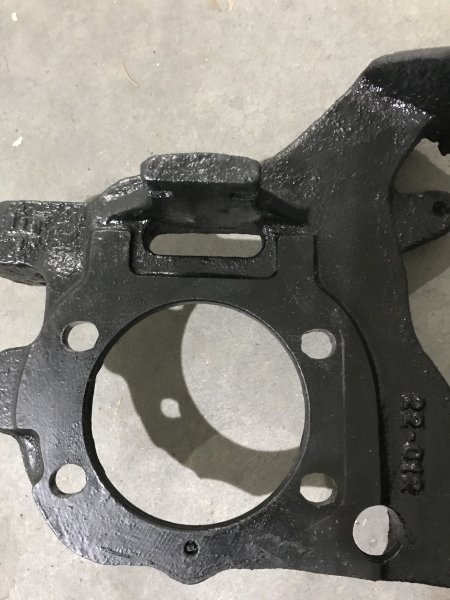


With the bolt pattern taken care of the next thing to address is the difference in thickness between the F8.8 disc brake backing plates and D44 drum backing plates.
- F8.8 disc brake backing plates are .350" thick
- D44 drum brake backing plates are .125" thick
This gives a difference in thickness of .225". Teraflex supplies a spacer in their aftermarket conversion kit to compensate for this. A search of their webpage showed the spacers can be purchase by themselves (PN 86261) for $6.99 each. The spacers are .226" thick. When you press them onto the axle shafts the spacer will go between the D44 retaining plate and the oil seal ring.
I read conflicting posts on whether or not the stock wheel studs would work and with what rims. I run the 90's era stock steel D-window rims. Before pressing the new axle bearings onto the axle shafts I did a test fit. With the old oil seal ring I put the axle shaft in place with the retaining plate and spacer. The stock wheel studs were
just long enough. I was able to get 5 - 6 full rotations on the lug nuts. The thread engagement was not enough for my personal comfort so I swapped the wheel studs for some F8.8 rear wheel studs (Dorman PN 610-368).

Before installing the axle shafts you will have to install the parking brake shoes. There is no way to get the parking brake shoes on with the axle shafts in.
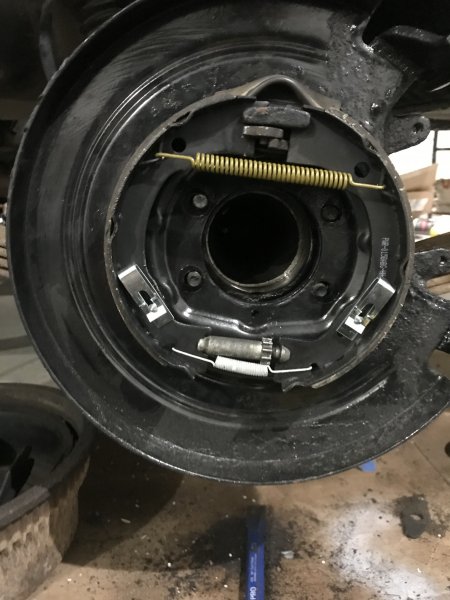
When trying to put the axle shafts in the spacer kept falling down preventing me from getting the axle shaft to seat all the way. To keep it from falling down when installing the axle shafts I put a thin coat of Ultragrey RTV on the spacer to glue it onto the retaining plate.

When selecting rotors I read of some guys using Ford Explorer rotors and others going with ZJ rotors. The comparison of the two is as follows:
F8.8 Rear Rotor w/Parking Drum in Hat
-Number bolt holes: 5
- Bolt Circle Dimensions: 4.5"
-Discard Thickness: .433"
-New Surface Thickness: .473"
-Outside Diameter: 11.22"
-Overall Height: 2.295"
ZJ Rear Rotor w/Parking Drum in Hat
-Number bolt holes: 5
- Bolt Circle Dimensions: 4.5"
-Discard Thickness: .374"
-New Surface Thickness: .43"
-Outside Diameter: 11.22"
-Overall Height: 2.33"
The difference between the two is practially negligible. So either one will work. Reviews of using the F8.8 rotors is there is some brake pad drag. But the main issue with using Ford 8.8 rotors is the center hole is too small for the axle shaft. The D44 axle shaft will not fit through the center hole without widening the inner circumference ~.015". A flapper wheel could take care of this. I went with the ZJ rear rotors due to the two issues that I read about the F8.8 rotors.




